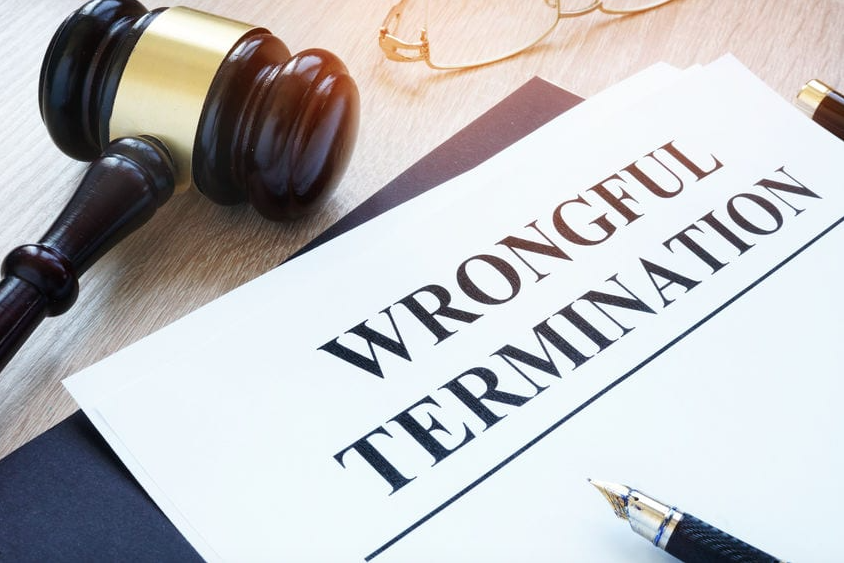Many employees around the world usually complain about unfair dismissal (also known as wrongful termination or discharge) from work by an employer. Therefore, you have to prepare and know your legal rights so that you don’t loose your opportunity to get another job.
Let’s walk you through the things you must know as the remedies for wrongful termination of employment. But first, what is wrongful employment termination?
What is Wrongful Termination of Employment?
In law, wrongful termination of employment (also called wrongful dismissal or wrongful discharge), occurs when an employee is dismissed from their job without legal justification or due process. In many cases, employees may believe that their dismissal was unjust and unlawful.
This can result in significant financial losses, emotional distress, and a negative impact on their career prospects. In this essay, we will examine what constitutes wrongful termination, why it occurs, and the legal remedies available to employees.
Types of Wrongful Termination
One of the most common types of wrongful termination is retaliation. This occurs when an employee is dismissed from their job in response to their participation in a protected activity, such as reporting discrimination or harassment, taking medical leave, or whistleblowing. Under federal and state law, employees are protected from retaliation for engaging in these activities, and employers who engage in retaliation may be held liable.
Another type of wrongful termination is discrimination. This occurs when an employee is dismissed from their job because of their race, gender, age, disability, religion, or other protected characteristic. Discrimination is illegal under federal and state law, and employees who are dismissed due to discrimination may be entitled to damages for lost wages, emotional distress, and other harm.
In some cases, employees may be dismissed without cause, or for reasons that are not legally justified. For example, an employee may be dismissed because their employer wants to hire a friend or family member, or because they don’t like the employee’s personality or work style. In these cases, the employee may be able to argue that their dismissal was wrongful and seek legal remedies.
Examples of Wrongful Termination of Employment
Remember that wrongful termination occurs when an employer fires an employee in a way that violates the law or breaches the employment contract. Here are some examples of wrongful termination:
- Discrimination: An employer cannot terminate an employee on the basis of their race, gender, religion, age, disability, or other protected characteristic.
- Retaliation: An employer cannot fire an employee in retaliation for complaining about workplace discrimination or harassment, filing a complaint with a government agency, or whistleblowing.
- Breach of contract: If an employee has an employment contract, the employer must abide by the terms of the contract when terminating the employee.
- Constructive discharge: An employer cannot create working conditions that are so intolerable that the employee has no choice but to quit. This is known as constructive discharge and is considered a form of wrongful termination.
- Violation of public policy: If an employer fires an employee for refusing to engage in illegal activity or for exercising a legal right (such as taking time off under the Family and Medical Leave Act), it may be considered a violation of public policy and wrongful termination.
- Whistleblowing: If an employee reports illegal activity or wrongdoing by the employer or co-workers, they are protected from retaliation under whistleblower laws. If the employer fires the employee for whistleblowing, it is considered wrongful termination.
It is important to note that each state has its own laws regarding wrongful termination, and some states provide more protection for employees than others.
What Causes Wrongful Termination?
Wrongful termination can occur for many reasons, including poor performance, insubordination, or violation of company policies. However, employers must follow proper procedures and give employees an opportunity to improve before dismissing them. If an employee is dismissed without proper notice or without a chance to improve, they may be entitled to damages for wrongful termination.
Similar Articles
- How to Respond to Query Letter given by Employer at your Workplace
- How to Write a Letter of Query to Staff: Misconduct, Absent, Lateness
- How to Call in Sick with Excuses on Phone, Email or Text Message
- How to Reply to a Letter of Misconduct in the Workplace
What to do in case of Wrongful Termination of Employment
If you believe that you have been wrongfully terminated from your job, there are a few steps you can take:
- Review your employment contract: Check your employment contract, employee handbook, or any other employment documents that may outline the terms and conditions of your employment. Look for any provisions that may be relevant to your termination, such as notice requirements or grounds for termination.
- Gather evidence: Collect any evidence that supports your claim of wrongful termination. This could include emails, performance reviews, witness statements, or any other documentation that may show that you were terminated without cause, in violation of company policy, or as a result of discrimination.
- Contact an attorney: Consider speaking with an attorney who specializes in employment law. They can review your case and advise you on your legal options.
- File a complaint: If you believe that your termination was unlawful, you may be able to file a complaint with the Equal Employment Opportunity Commission (EEOC) or your state’s labor department. These agencies can investigate your claim and take legal action on your behalf.
- Negotiate with your employer: You may also consider negotiating with your former employer to try to resolve the issue outside of court. This could involve seeking reinstatement, negotiating a severance package, or other forms of compensation.
It’s important to act quickly if you believe you have been wrongfully terminated, as there may be time limits for filing a complaint or taking legal action.
Best Legal Remedies for Wrongful Termination
There are some remedies for wrongful dismissal. Legal remedies for wrongful termination may include reinstatement, back pay, lost benefits, emotional distress damages, and punitive damages. Reinstatement means that the employee is returned to their job as if they were never dismissed. Back pay is the amount of money the employee would have earned if they had not been dismissed.
Lost benefits may include health insurance, retirement benefits, and other benefits that the employee lost as a result of their dismissal. Emotional distress damages may be awarded if the employee suffered severe emotional distress as a result of their dismissal. Punitive damages may be awarded if the employer engaged in particularly egregious behavior. You can always contact your local case law attorney (lawyer)
Compensation for Wrongful Termination
If an employee has been wrongfully terminated, they may be entitled to compensation. The specific amount of compensation will depend on the circumstances of the termination, including the reasons for the termination, the length of the employment, and the financial and emotional harm caused by the termination.
Some common forms of compensation for wrongful termination include:
- Back pay: This is the amount of money the employee would have earned if they had not been wrongfully terminated. It includes wages, bonuses, and benefits.
- Front pay: This is the amount of money the employee would have earned in the future if they had not been wrongfully terminated.
- Reinstatement: In some cases, an employee may be entitled to be reinstated to their former position or a similar one.
- Emotional distress damages: If the employee has suffered emotional harm as a result of the termination, they may be entitled to compensation for emotional distress.
- Punitive damages: In some cases, if the termination was particularly egregious or malicious, the employee may be entitled to punitive damages, which are intended to punish the employer for their behavior.
It is important to note that the laws and regulations surrounding wrongful termination and compensation can vary depending on the jurisdiction and the specific circumstances of the case. If you believe you have been wrongfully terminated, it is recommended that you consult with a lawyer who specializes in employment law to determine your rights and options.
Conclusion
In conclusion, wrongful termination of employment can have serious consequences for employees, including financial loss, emotional distress, and damage to their career prospects.
Employees who believe that they have been dismissed without legal justification or due process should seek legal advice and explore their options for legal remedies. You can search for labour law on termination of employment in your local country by downloading it in pdf. Employers must follow proper procedures and act in accordance with federal and state law to avoid liability for wrongful termination.
Recommended Articles
- Termination of Contract, Business Agreement and Job Appointment
- Contract Termination Letter Sample Template: All you must know
- Breach of Agreement Notice Letter When a Party Fails their Obligation
- Recommendation Letter Templates for Job Application, School Admission
- Loan Approval Letter from Employer to Employee [Sample]


![Loan Approval Letter from Employer to Employee [Sample] Loan Approval Letter from Employer to Employee [Sample]](https://hybridcloudtech.com/wp-content/uploads/2023/03/Loan-Approval-Letter-from-Employer-to-Employee-Sample-100x70.png)




